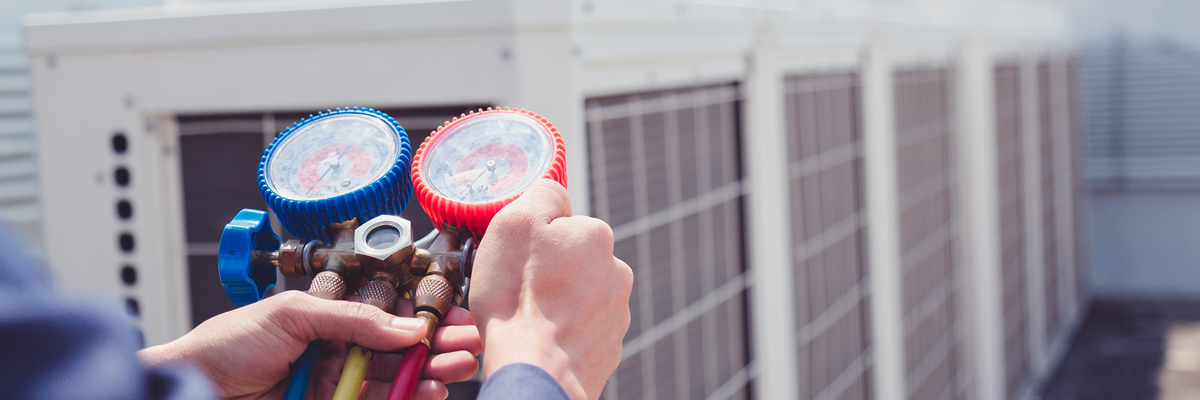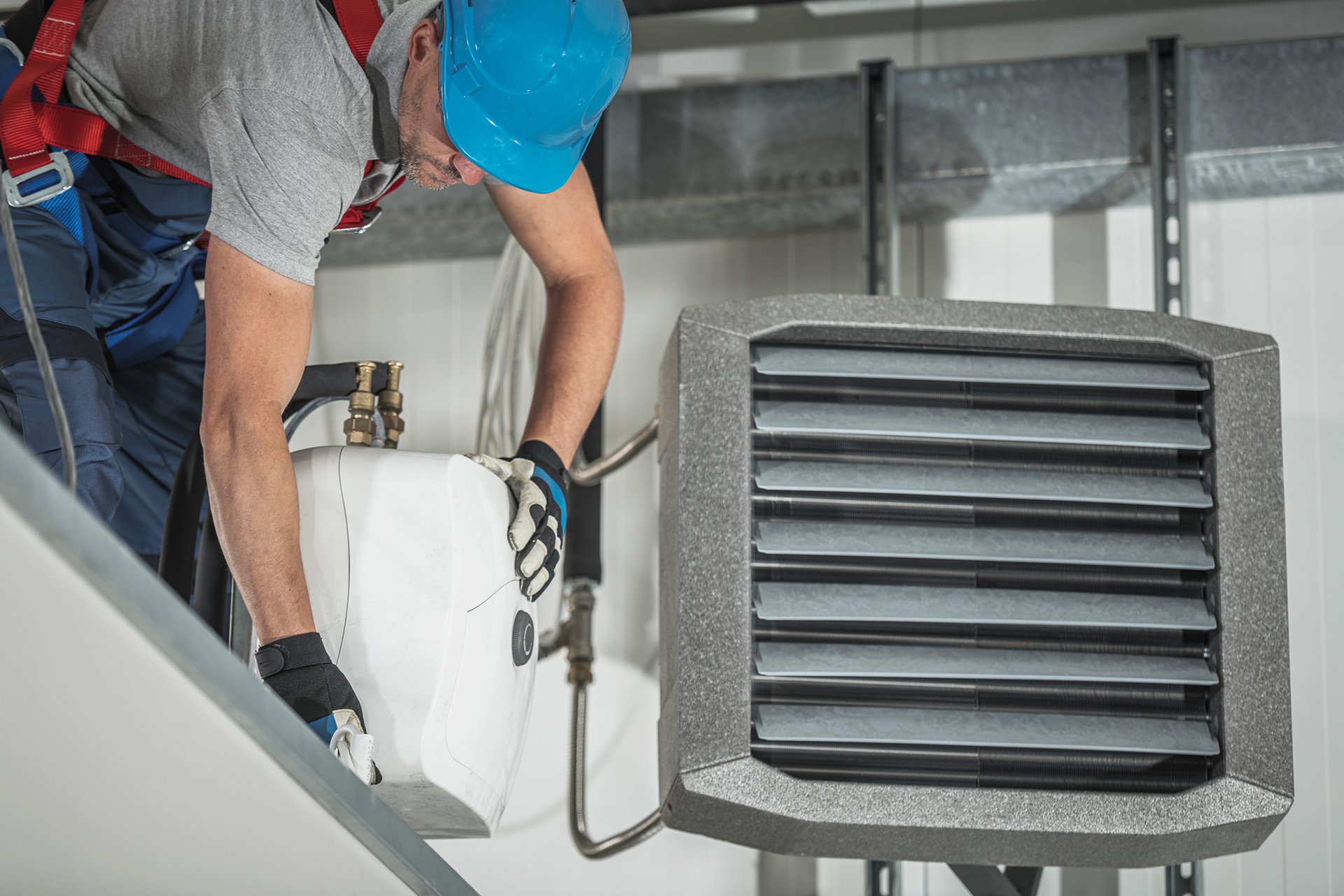How a Heat Pump and Heater Collaborate to Enhance Your Home's Home heating Performance
Recognizing just how a warm pump and heating system collaborate is important for homeowners looking for effective heating services. Each system has its staminas, providing a well balanced method to home comfort. The heat pump masters moderate temperature levels, while the furnace supplies fast heat during extreme cold. This synergy not only minimizes power costs yet likewise boosts the life expectancy of both appliances. What aspects affect this cooperation, and how can home owners maximize their advantages?
Understanding Warm Pumps: Exactly How They Work
Although many individuals may be unknown with their internal functions, heatpump play an essential function in modern-day heater. These devices run by moving warmth from one area to another, using the principles of thermodynamics. In colder months, a heatpump extracts warmth from the outside air, ground, or water, and transfers it inside your home to warm up the space. On the other hand, throughout warmer months, it can reverse the process, functioning as an a/c by expelling warm from inside to the outside.Heat pumps consist of an evaporator, growth, condenser, and compressor shutoff. The cooling agent within the system soaks up warmth as it evaporates at low temperatures and stress. The compressor after that increases the stress and temperature of the cooling agent, permitting it to release warmth as it condenses. This efficient procedure can considerably lower energy intake contrasted to typical home heating techniques, making warmth pumps a sustainable choice for climate control in homes.
The Duty of Heaters in Home Home Heating
Heating systems play an essential role in home heating by offering a trustworthy resource of warmth during the cooler months. They run by producing heat via combustion or electric resistance, distributing it throughout the home through ducts or glowing systems. The efficiency of a heating system is usually gauged by its Annual Fuel Application Performance (AFUE) score, which indicates just how successfully the system converts fuel right into heat.Furnaces can make use of numerous power resources, consisting of gas, lp, oil, or electrical power, permitting home owners to pick the most ideal choice for their demands. Unlike heatpump, which may battle in extreme cool, heating systems maintain constant efficiency, making certain that interior temperatures stay comfy regardless of exterior conditions. Furthermore, modern-day heating systems frequently come geared up with innovative modern technology, such as clever thermostats and variable-speed blowers, enhancing their effectiveness and responsiveness. This versatility makes heating systems an important element in all-inclusive home heating strategies.

Advantages of Making Use Of Both Solutions With Each Other
Incorporating the staminas of both heating systems and heatpump can lead to a more efficient and efficient home heating remedy. Using both systems permits homeowners to make the most of the heatpump's power efficiency throughout milder temperatures while relying on the heater for even more extreme cold problems. This twin technique can greatly decrease power prices, as heatpump take in less electricity than typical heating approaches when temperature levels are moderate.Additionally, using both systems with each other can boost comfort degrees in the home. Heat pumps can give regular, also heating, while furnaces can swiftly raise ambient temperature levels when needed. The assimilation of both systems can prolong the life expectancy of tools by reducing wear and tear on each device, as they share the work. Inevitably, house owners can appreciate a well balanced, cost-efficient heating solution that adjusts flawlessly to varying weather, ensuring a cozy and inviting home throughout the winter season.
How Warm Pumps and Furnaces Complement Each Various Other
When homeowners integrate heatpump and furnaces, they produce a complementary heater that makes the most of effectiveness and convenience. Warmth pumps run by moving warm from the outdoors air or ground, making them highly effective in modest environments. They excel during milder temperatures, giving cost-efficient heating. Alternatively, heating systems generate warmth with combustion or electrical resistance, delivering strong, immediate warmth during extreme cold conditions.The mix of these two systems permits for vibrant modifications based on temperature level changes. During warmer months or milder winter months days, the heat pump can take the lead, saving energy and decreasing costs. As temperature levels drop, the heater can effortlessly involve, guaranteeing constant heat throughout the home. This synergy not just optimizes energy use but additionally boosts the lifespan of both systems, as each system runs within its excellent performance variety. Together, they produce a well balanced environment that adjusts to differing environment needs.
Maximizing Performance: Tips for Homeowners
House owners can enhance their home heating performance through a number of useful approaches. Developing a normal upkeep find more timetable, incorporating clever thermostat modern technology, and implementing efficient insulation and sealing options are crucial actions. These steps not only boost convenience yet additionally lower power costs.
Regular Maintenance Schedule
To assure optimal home heating effectiveness, developing a routine maintenance schedule is vital for any kind of home. House owners should focus on routine assessments of both heat pumps and furnaces to establish peak performance. This includes altering air filters each to three months, as clogged filters can considerably reduce efficiency. In addition, organizing expert maintenance a minimum of yearly permits professionals to identify and address potential concerns prior to they rise. Homeowners must also clean up the heatpump's exterior unit to stop particles buildup that can hinder air flow. By sticking to a normal upkeep routine, homeowners not just boost their heater' performance but likewise prolong their lifespan, causing better convenience and lowered power prices throughout the colder months.
Smart Thermostat Integration
Integrating a wise thermostat into a home furnace can significantly boost energy efficiency, specifically as it permits accurate control over temperature settings. These devices can find out the homeowner's timetable and choices, automatically readjusting the temperature level to enhance comfort while decreasing power use. They can reduce heating during times when the home is unoccupied, reducing unneeded intake. Lots of wise thermostats also provide real-time energy usage data, making it possible for house owners to make educated choices about their home heating practices. In addition, remote accessibility using smart device applications permits individuals to change setups from anywhere, ensuring the home is cozy upon return. On the whole, wise thermostat combination not just boosts comfort but significantly contributes to power financial savings and efficiency.
Insulation and Securing Solutions
Smart thermostats play an essential duty in energy performance, but their efficiency can be considerably improved by correct insulation and securing solutions. House owners should prioritize protecting attic rooms, floors, and walls to decrease warm loss. High-grade insulation materials, such as spray foam or fiberglass, can significantly enhance thermal resistance. Furthermore, sealing spaces around air ducts, doors, and home windows prevents chilly air infiltration and warmth escape. Weatherstripping and helpful resources caulking work approaches for addressing these leakages - furnace replacement. Regular assessments for air leaks, in addition to the usage of blower door examinations, can aid identify issue locations. By buying insulation and sealing, homeowners can enhance the performance of their home heating systems, inevitably resulting in decreased energy usage and lower utility bills
Common Misconceptions Regarding Warm Pumps and Furnaces
What misunderstandings border warm pumps and heating systems? Lots of people wrongly believe that heatpump are ineffective in colder environments. Actually, contemporary heat pumps are created to run successfully also in reduced temperatures, giving dependable heating throughout winter months. An additional typical misconception is that heating systems are constantly a lot more effective than heatpump. This depends on the certain energy resources and efficiency scores of the units in concern. Some might also assume that making use of both systems simultaneously is unneeded, but actually, this mix can optimize heating effectiveness, particularly throughout extreme climate condition. Additionally, people usually presume that heatpump require consistent maintenance, when in fact, they have comparable upkeep requires to standard heating unit. By disproving these myths, homeowners can make even more enlightened decisions regarding their home heating options, ultimately bring about improved convenience and webpage power performance in their homes.
Upkeep Considerations for Combined Solutions

Regularly Asked Questions
Can Heat Pumps Job Efficiently in Incredibly Cold Climates?
Heatpump can battle in extremely cool environments because of reduced effectiveness and heat extraction limitations. Nevertheless, innovations in modern technology have led to versions created for better performance in such problems, boosting their practicality in rough atmospheres.
For How Long Do Heat Pumps and Furnaces Normally Last?
Heatpump commonly last 15 to 20 years, while heating systems have a lifespan of 15 to 30 years. Regular maintenance can prolong their long life, guaranteeing efficient procedure and decreasing the requirement for premature substitutes.

What Is the Average Price of Installing Both Solutions?
The typical price of mounting both a heatpump and a heating system usually ranges in between $5,000 to $10,000 - furnace replacement. Variables influencing this cost consist of system size, installation intricacy, and local labor rates
Exist Tax Obligation Motivations for Using Energy-Efficient Home Heating Systems?
Several house owners inquire regarding tax rewards for energy-efficient heating unit. Various federal and state programs commonly provide refunds or credit histories, urging the adoption of sustainable technologies to decrease power consumption and promote environmental obligation.
Just how Do I Pick the Right Dimension Heat Pump and Furnace?
Selecting the right size heatpump and furnace includes calculating the home's square footage, considering insulation quality, and reviewing neighborhood environment. Consulting a professional can guarantee perfect system performance and power effectiveness based upon certain needs. furnace replacement. Recognizing exactly how a heat pump and heating system work with each other is important for homeowners looking for efficient home heating options. In colder months, a heat pump removes warm from the outdoors air, ground, or water, and transfers it inside to warm the living space. When property owners integrate warmth pumps and furnaces, they create a corresponding heating system that maximizes efficiency and convenience. Warm pumps operate by moving heat from the outside air or ground, making them highly reliable in moderate climates. Warmth pumps can struggle in extremely cold climates due to decreased efficiency and heat removal constraints